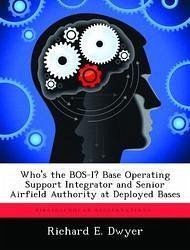Nicht lieferbar

Analysis of the Support Capabilities of the Forward Deployed Corps.
Versandkostenfrei!
Nicht lieferbar
This study, through use of model corps, attempts to analyze the capability of the forward deployed corps to sustain itself in combat the first 5 days of a "come as you are" war in Europe. The analysis is performed in the assumed environment of the anticipated OPFOR capabilities and tactics, the United States "active defense" response, and the logistics requirements generated by that response. It attempts to determine: if the COSCOM, formulated under the "austere support" principle, is adequate to support the corps until augmentation can be effected; if the combat service support structure detr...
This study, through use of model corps, attempts to analyze the capability of the forward deployed corps to sustain itself in combat the first 5 days of a "come as you are" war in Europe. The analysis is performed in the assumed environment of the anticipated OPFOR capabilities and tactics, the United States "active defense" response, and the logistics requirements generated by that response. It attempts to determine: if the COSCOM, formulated under the "austere support" principle, is adequate to support the corps until augmentation can be effected; if the combat service support structure detracts from the corps' combat power; and what changes in the COSCOMs employment can be made to improve combat service support. The analysis indicates an organic transportation capability far less than that required which impacts on support available throughout the logistics services spectrum. Further, support plans presently in effect assume host nation support will provide logistics sufficiency. These assumptions are made although formal agreements have not been concluded, legislative difficulties exist, and the requirements have not been quantified. Recommendations of the analysis include quantifications of host nation support requirements, a reorganization of the COSCOM battalions and further, more detailed analysis in several logistics areas.










